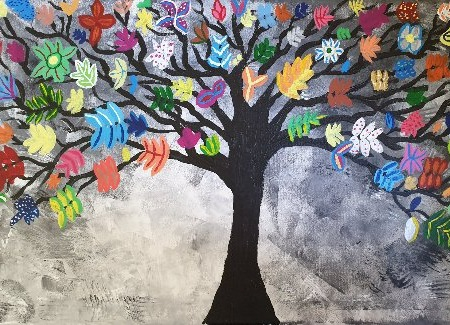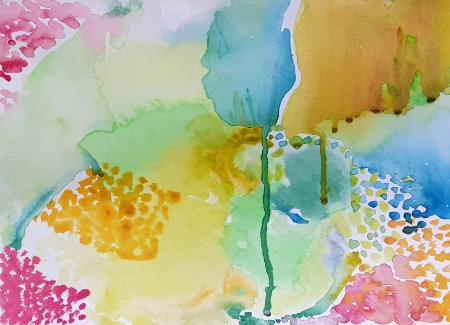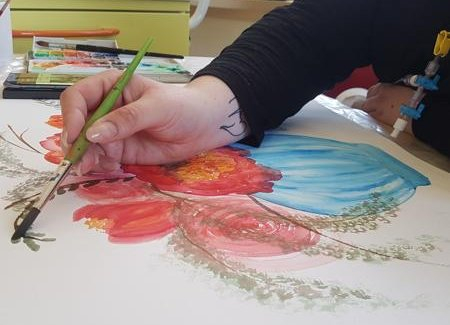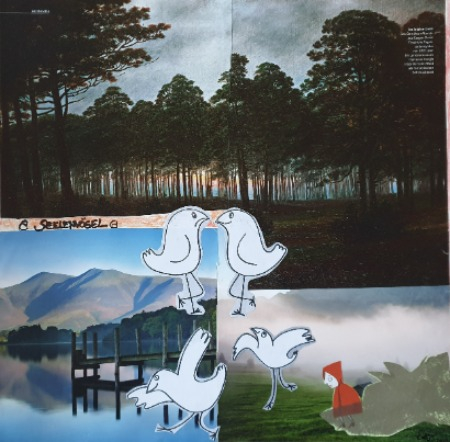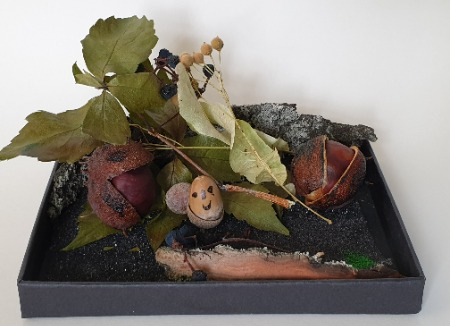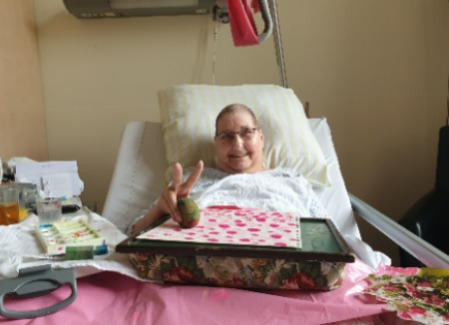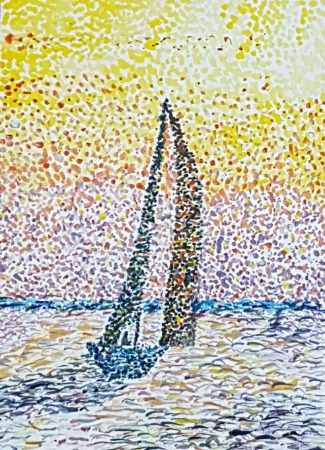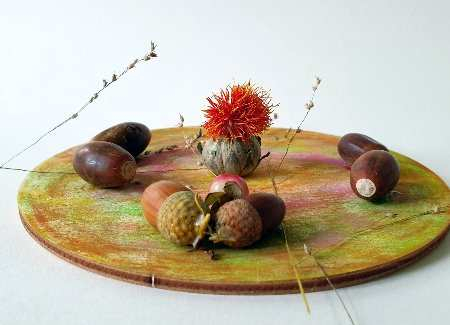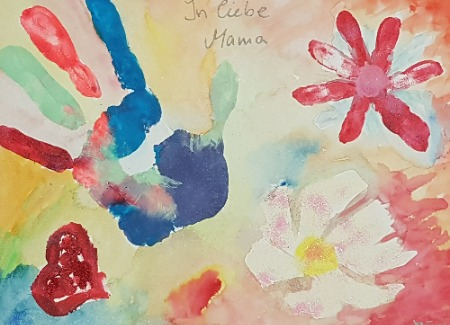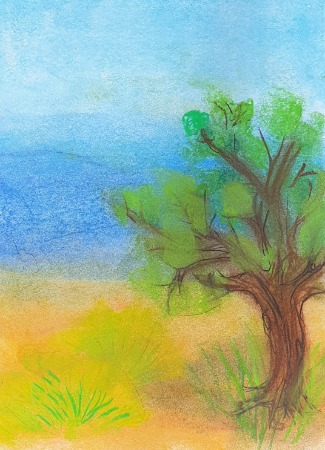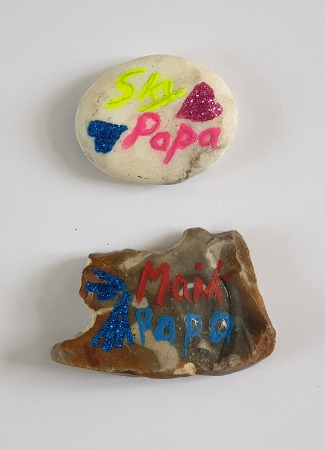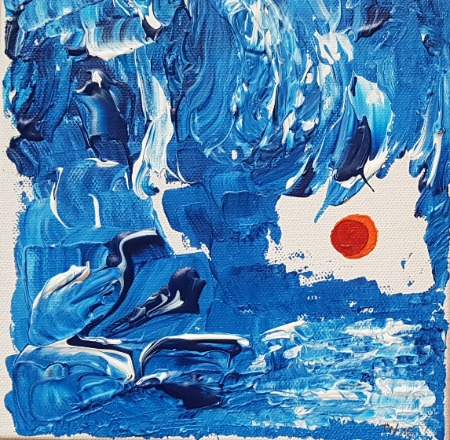
Palliative Art Therapy
Palliative Art Therapy
Palliative Art Therapy supports you in what you need at any given moment. Your wishes determine the direction. I will bring my mobile studio and support you e.g. at your home, in a nursing home, in hospital or in a hospice. The term palliative care or palliative medicine is derived from the Latin “pallium” and means “protective cloak” or “to wrap with a cloak”. The idea behind it is to support people with advanced incurable illnesses on their journey in the best possible way – quality of life is the key word here.

For whom?
My offer is suitable for
- Children, adolescents and adults with a life-limiting illness or at the end of their lives
and of course also for
- Families and Chosen Families in which a family member is ill
- People who are close to a seriously ill or dying person, e.g. partners, relatives, chosen Family and friends
Find out more about my services for children and young people with incurable illnesses.
I have been working as an art therapist in a palliative context with seriously ill and dying people since 2015. In palliative treatment in hospital, art therapy is used as part of non-medicinal pain therapy, among other things. Many of the people I have worked with there are burdened by symptoms such as pain, nausea or exhaustion. Palliative support with art is also possible and beneficial if, for example, mobility, vision or the ability to communicate verbally are limited or absent.
Previous artistic knowledge or skills are not necessary. I will bring all the necessary materials with me.
Artistic accompaniment helps to
- relax physically and mentally
- find your way of dealing with everything that is
- focus on what is important to you
- defocus your attention from pain and suffering and experience beautiful and light moments
- be able to give space to your own feelings, thoughts and questions without worrying about emotionally overburdening those close to you
- to look back on your own life
- find the strength to part consciously and in a self-determined way

What happens in Palliative Art Therapy?
Palliative Art therapy can be as diverse and varied as humans and life paths themselves. I adjust my offer and methods to the needs, wishes and ideas of individual the person.
A few elements and methods from my “toolbox”:

- Receptive Art Therapy (e.g. looking at biographically important images, objects or art)
- Active creating with materials of your choice (e.g. paints, stone, wood, shells, clay, etc.)
- Creative memory work (e.g. making gifts, life books, mementos or written documents)
- Mindful Bodypainting
- Biography work
- Fantasy journeys | Imaginantion
- Working with Fairy tales
- Ritual design
- Relaxation methods
- Das gemeinsame Gespräch
- Conversation
Relaxation, calm and strength
Naturally, artistic accompaniment cannot conjure away debilitating physical symptoms or undo pressing worries and anxiety. But it can create islands of calm and strength. It can help to shift attention. The present moment becomes important – the bright colors of the autumn tree outside the window. The smooth Baltic Sea shell in your hand. The right color in this very moment.


Life themes and companions
Life topics, wishes or “unfinished business” can be symbolically “dealt with” in thought or on paper and perhaps also closed.
Sometimes unresolvable pain, anxiety or fears also have to do with earlier events or unresolved issues. Memory and biography work is therefore often a natural part of the support.
The creative process takes place in joint reflection and thought experience. And sometimes pictures, sculptures, texts or other objects develop from this. Memories, thoughts or wishes take on a tangible form. I will support you or, if you wish, realize your ideas and visions.
Passing on objects or art created during this phase of life to loved ones can be comforting for everyone involved. Thoughts, memories or wishes that are painted, sculpted, written on paper or given any other form become valuable gifts and keepsakes for people who are important to you.
Time together
It is also possible to create something jointly with one or more loved ones. To work together, talk, laugh, cry or remain silent.
Thoughts, feelings, hopes and wishes for each other, may also have their place. Maybe it feels good to look back on the time you shared? Or to take a break from the stresses of everyday life? Or to consciously and jointly organize the upcoming farewell? There can be grief, fear and worry, anger, hope or gratitude, and often feelings intermingle.
To be authentically in contact with each other in this painful situation can be helps to find the strength to move on to the next steps in life.

Procedure
- 20-minute info call by phone or online via video chat (free)
- Cost of additional meetings varies by scope
- Frequency and location of meetings by arrangement
- Appointment usually 60 minutes, longer by arrangement
